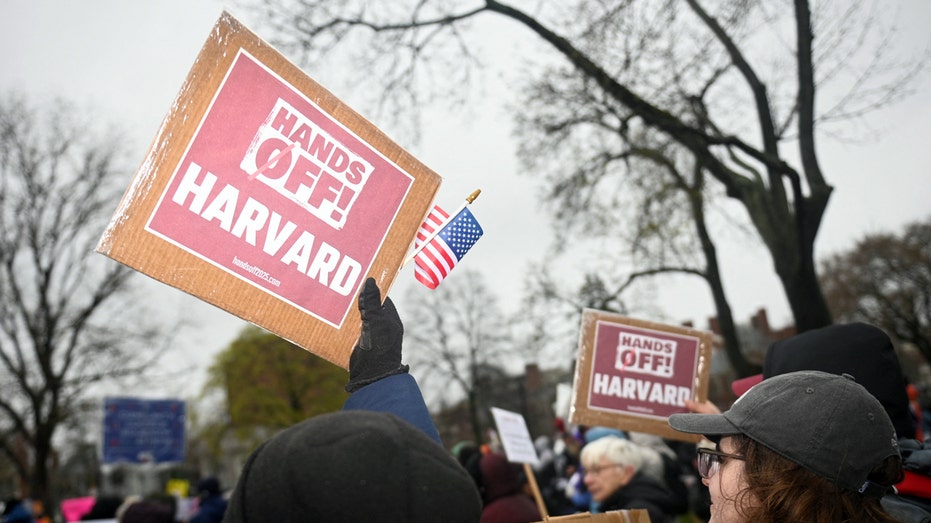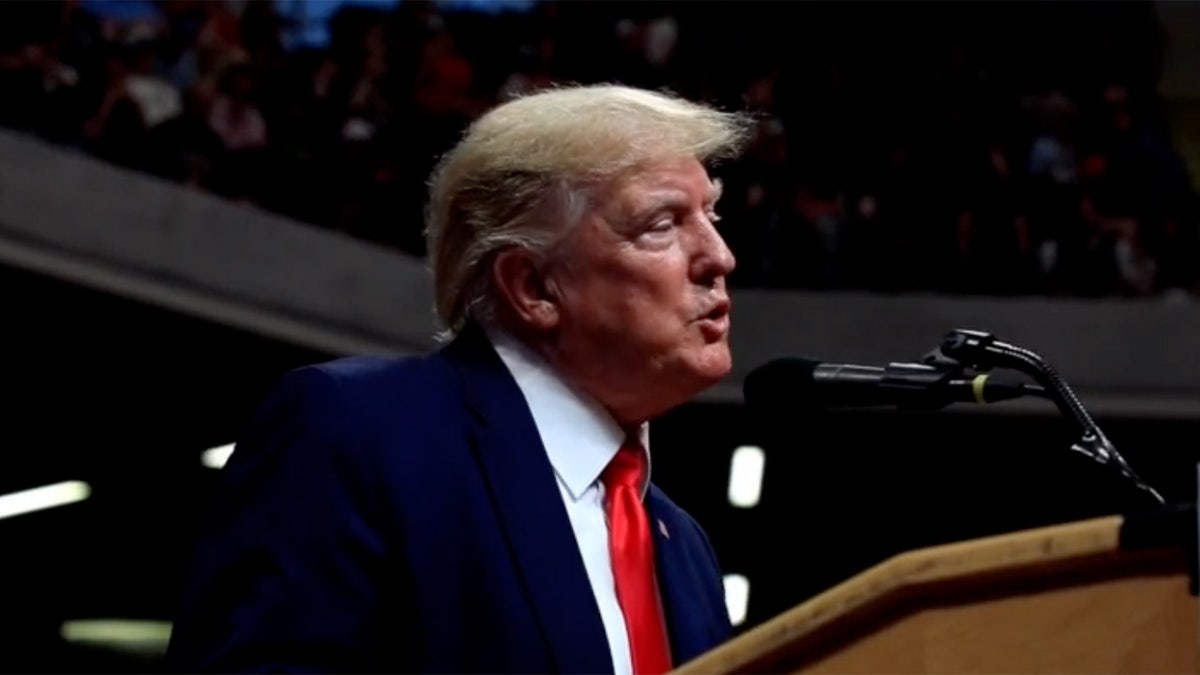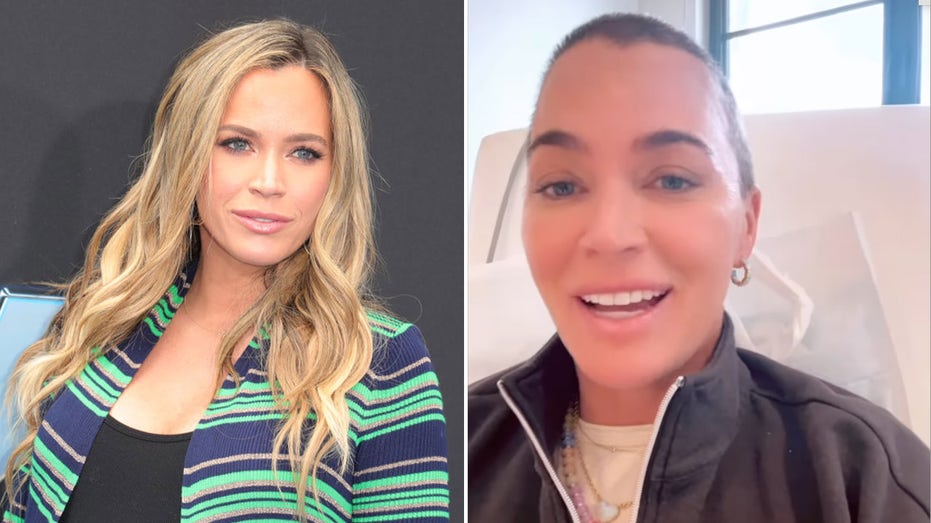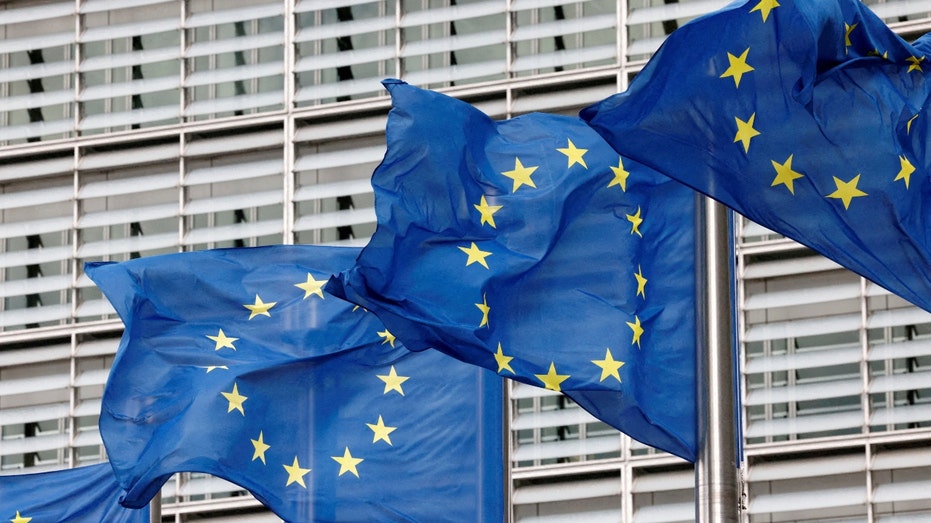The new case of The President and Fellows of Harvard College v. the Department of Health and Human Services et al, filed this week, is going to be intensely interesting to follow as the university’s unconstitutional use of race in admissions has gone on for years and its systemic anti-Semitism has been obvious to any campus-watcher since 10/7.
Harvard is going to have to argue in federal court —one way or another— that the courts pay no attention to the Civil Rights Act of 1964 that sits behind the curtain over there outside of the court’s view. Similarly, Harvard is going to have to argue the Supreme Court precedents of Bob Jones University v. U.S. (1983) and Students for Fair Admission v Harvard (2023), which are also back there behind the drapes, are similarly not properly before the courts.
Bravo to the Wall Street Journal’s editorial board which on Wednesday morning at least got one of the major legal precedents, Bob Jones, correctly stated and pushed on to the debate stage. That precedent is one which many legacy media “analysts” either don’t understand or don’t want to confront much less apply to “fair Harvard.”
“The IRS in 1970 adopted a policy of barring tax-exempt status for private schools engaging in racial discrimination.” the Journal noted in a Wednesday editorial titled “Should Harvard Be Tax Exempt?”
“In 1983 the Supreme Court upheld the IRS’s rescission of Bob Jones University’s tax-exempt status on the rationale that “‘an institution seeking tax-exempt status must serve a public purpose and not be contrary to established public policy.’”
CLICK HERE FOR MORE FOX NEWS OPINION
While admitting that “[t]hat precedent prevails today,” the editors spent the bulk of their word count Wednesday praising the sole dissent in the 8-1 decision, one authored by then-Justice William Rehnquist. Their fears, like those of Justice Rehnquist long ago, are not unfounded. Voices were raised at the time before, during and after the decision in Bob Jones worrying about the implications of the decision. Those voices warned then and now that the dreaded “slippery slope” was near.
Teach Constitutional Law long enough and you run into many worries about all sorts of those slopes. Some turn out to be real.
When the Court blessed zoning as consistent with the Fifth and Fourteenth Amendments in 1926’s Village of Euclid v. Ambler Realty Co., it pushed the power of government over private property over a cliff and onto a steep slope down which those rights continue to roll. The worst of the worst abusers of property rights—the California Coastal Commission for example—did take the embryonic grant of authority in Village of Euclid to such ridiculous lengths that the Court has had to periodically intervene to check the power in cases such as 1987’s Nollan v. California Coastal Commission. But those rare handholds on that real slippery slope have been few and far between and government’s abuse of the takings power is pretty much unchecked today. (Would that the Court revive the “Takings Clause” as it goes about the project of reducing the damage of progressivism over its past century of decision-making untethered to the actual text of the Constitution. Faster, please.)
TRUMP SAYS HARVARD ‘LOST ITS WAY,’ DOESN’T DESERVE FEDERAL FUNDING
When Justice Lewis Powell opened the door—very, very slightly—to the use of race in admissions in only higher education in 1978’s Regents of the University of California v. Bakke, almost all of American higher ed (and not a few K-12 school districts) promptly rushed through that door, out of it, and over the top of a cliff and fell, fell, fell and are falling still into prohibited uses of race on campus.
Harvard was specifically and recently found to be violating the Constitution’s and the Civil Rights Act of 1964’s ban on the use of race to award benefits or inflict penalties. That decision came down in late June 2023, less than four months before 10/7. So Harvard has an unbroken record of ignoring the nation’s keystone anti-discrimination statute for years and years with regard to at least Asian American applicants before the horrific massacre of 10/7 and by tolerating anti-Semitism since then.
The “deep magic” of Harvard and other prestigious universities is built on the elitism that has been nurtured by exclusion. As elitism’s enforcers in the admissions offices moved from protecting legacy admissions to administering quotas on the number of Jews admitted in the first decades of the 20th century to the cap on Asian Americans in this century, they rarely spoke on the record about their malign designs. A. Lawrence Lowell, a Harvard president for nearly a quarter of the 20th century during the “Progressive Era,” was the exception. Lowell did worry out loud about the “Jewish problem,” and led the fight for quotas on Jewish students allowed to enroll, an “answer” to the “Jewish problem” which many other elite universities embraced.
The momentum behind the principles of equality before the law and liberty for all embedded in the texts of the Declaration of Independence, the Constitution, the Fourteenth Amendment and the Civil Rights Act of 1964 proved, however, to be relentless over the centuries and increasingly so after 1954 and the Brown v. Board decision, though very slow in delivering on the promise of equality before the law for all Americans and penalties on the conduct of those who openly violated that guarantee with their conduct. Like a slow-moving glacier, those central commands of equality before the law and liberty are still rolling out and moving inexorably forward, still aiming to be for all citizens “the apple of gold protected by a frame of silver,” which is how Abraham Lincoln described the Declaration and the Constitution respectively.
Back in the early 1980s, the Bob Jones case caused a deep split at the Reagan Department of Justice between those whose first allegiance was to the Free Exercise Clause of the First Amendment and those committed to the Equal Protection Clause or the 14th Amendment and the eradication of racism from the country’s institutions.
Then-Solicitor General Rex Lee recused himself from the case because of past positions he had taken in defense of the Church of Jesus Christ of Latter Day Saints, and his chief deputy, Lawrence Wallace prevailed over many senior DOJ officials in arguing that the government should defend the revocation of the tax-exempt status of Bob Jones (and by extension its First Amendment claims that it’s discriminatory practices were protected by the First Amendment). It was a bitter fight inside the building and the scars it created endured through the tenures of both Attorneys General William French Smith and Edwin Meese. The DOJ eventually sided with the IRS’s determination that Bob Jones should lose its tax exempt status but not without a big fight within Justice. (The University regained tax-exempt status in 2017.)
Now the Bob Jones decision has re-emerged as a key precedent 40-plus years later, but a very inconvenient one for many analysts because President Donald Trump is taking the position consistent with the eight justices in the 8-1 decision of four decades ago, and because this time the university possibly at risk of losing its tax-exempt status is Harvard and not Bob Jones.
The Journal’s editors and not a few people without such a big platform have argued that we really don’t want the Bob Jones precedent out of its deep recess and walking around. Like the editors at the Journal, some guests on my program fear a future leftist president using the law to deny disfavored conservative institutions their tax-exempt status.
This is a real fear, but that’s not the way the law works when precedents are on the books. The pronouncements of the Supreme Court fall like rain on the just and the unjust, on small colleges in the post-segregation South and on the oldest university in the land in 2025. It is not for elites to pick and choose which Supreme Court precedents apply to which tax-exempt institutions. The holding in Bob Jones applies to them all.
The eight-justice majority wrote in 1983 that “[a]n unbroken line of cases following Brown v. Board of Education establishes beyond doubt this Court’s view that racial discrimination in education violates a most fundamental national public policy, as well as rights of individuals.”
What has Harvard been engaged in? First and obviously, Harvard has been using race to discriminate in its admissions and in the treatment of its students. We know that because of the decision in Students for Fair Admissions v. Harvard, a June 2023 decision of the Supreme Court, and by the admissions made by Harvard’s current president Alan Garber made in an open letter somewhat pompously titled “Our Resolve” from March 31 of this year.
When Harvard along with the University of North Carolina were under the scrutiny of the Supreme Court two years ago, the Court concluded that the officials at both universities conducted admissions programs that were not using “sufficiently focused and measurable objectives warranting the use of race,” programs which “unavoidably employ race in a negative manner, involve racial stereotyping, and lack meaningful end points.”
“We have never permitted admissions programs to work in that way, and we will not do so today,” the Court ruled.
Harvard lost that case after mounting the weakest of defenses. “The universities’ main response to these criticisms is, essentially, ‘trust us,’” the majority opinion authored by Chief Justice Roberts observed with almost audible scorn.
Harvard’s back with the same weak promise, this time about its Jewish students. In his “Our Resolve” pronouncement from March 31 of this year, Harvard President Alan Garber confesses to the systemic nature of the anti-Semitism problem on his campus, and reviews all that the university has done since the assault of Harvard’s Jews began after 10/7 before concluding:
“We still have much work to do. We will engage with members of the federal government’s task force to combat antisemitism to ensure that they have a full account of the work we have done and the actions we will take going forward to combat antisemitism. We resolve to take the measures that will move Harvard and its vital mission forward while protecting our community and its academic freedom. By doing so, we combat bias and intolerance as we create the conditions that foster the excellence in teaching and research that is at the core of our mission.”
In other words: “Trust us.”
That plea didn’t cut it with the Court in 2023. It shouldn’t cut it with critics of the university today. And the Bob Jones 8-1 decision of 1983 isn’t an inconvenient constitutional cul-de-sac to be sped past. It is governing precedent that controls until the Supreme Court says it doesn’t.
“There are better ways to reduce taxpayer money for schools and give them an incentive to reform,” the Journal’s editorial board argued Wednesday in urging no one pay attention to the binding precedent and leave Harvard’s tax exempt status alone. Their reasoning, which includes a fear of future leftists running the IRS, has some grounding in actual fact. The IRS was indeed abusive of conservatives during President Obama’s tenure.
But the fear of the slippery slope shouldn’t be summoned up to protect Harvard from its now-established record of bias in its structures. How unbalanced has the university become?
“Members of Harvard’s governing boards and faculty donated more than $2.3 million to political candidates and causes ahead of the 2024 U.S. presidential election, a Crimson analysis found.” That’s the student campus newspaper, the first stop on a conveyor belt to legacy media that has been running for decades. To whom did they donate?
“The analysis, which comes just 10 days before Americans head to the polls, found that 94 percent of political contributions from Harvard affiliates went to Democratic candidates, with the majority going toward Democratic presidential nominee Kamala Harris,” the Crimson continued.
“The liberal skew of faculty and governing board members’ donations continues a long-standing trend at Harvard,” it concluded.
No addict can address their abuse until they admit it exists. Harvard has admitted their illegal biases, sort of, though anyone who thinks the admissions committee isn’t embarked on work-arounds for race-based admissions doesn’t live in the real world. The “Our Resolve” letter included a pledge to work to evict anti-Semitism from the campus but is silent on diversity of thought among its faculty and staff. There is no easy way back to a culture of genuine viewpoint inclusivity when the faculty has, for example, driven out or underground almost all of its conservatives. But there are many steps the university could take to remedy all of their many embedded biases.
The first letter that the Department of Education sent to Harvard this month was five pages long and detailed the ten areas where the university needed to undertake reform.
They range from “Governance and leadership reform” to “Merit-Based Admission Reform” to “Reforming Programs with Egregious Records of Anti-Semitism or Other Bias” to “Discontinuation of DEI.” The letter is a reasonable set of demands when set opposite Harvard’s record of prohibited discrimination of the past many years. Despite the “Our Resolve” letter of March 31, it took President Garber and his many lawyers a full weekend in April to reject the government’s demands out of hand and another week to file its suit in federal court.
Thus did the precedent of Bob Jones resurface this week, with a vengeance. What exactly is the difference between discrimination prohibited by law at Bob Jones and the same sorts of discrimination at Harvard? Quite a lot, it turns out, to many defenders of Harvard. Bob Jones was an easy target forty years ago (and its defense of First Amendment protection unavailing), but Harvard? Slow down there folks.
Now Harvard finds itself in the shoes of Bob Jones. The Journal’s editors know this and so does every honest observer. The difference is: Harvard has lots and lots of money and even more alums who hate Trump more than they hate prohibited discrimination. There are also legions of leftists who want very much to be able to discriminate according to their world view.
To which the only answer should be: “See you in court, Harvard.” The eventual oral argument that either attempts to distinguish Bob Jones on the facts (“our discrimination is not that bad and theirs was horrible!”) or which asks the Court to overrule the precedent will be quite interesting to listen to.
Hugh Hewitt is a Fox News contributor, and host of “The Hugh Hewitt Show,” heard weekday mornings 6am to 9am ET on the Salem Radio Network, and simulcast on Salem News Channel. Hugh wakes up America on over 400 affiliates nationwide, and on all the streaming platforms where SNC can be seen. He is a frequent guest on the Fox News Channel’s news roundtable hosted by Bret Baier weekdays at 6pm ET. A son of Ohio and a graduate of Harvard College and the University of Michigan Law School, Hewitt has been a Professor of Law at Chapman University’s Fowler School of Law since 1996 where he teaches Constitutional Law. Hewitt launched his eponymous radio show from Los Angeles in 1990. Hewitt has frequently appeared on every major national news television network, hosted television shows for PBS and MSNBC, written for every major American paper, has authored a dozen books and moderated a score of Republican candidate debates, most recently the November 2023 Republican presidential debate in Miami and four Republican presidential debates in the 2015-16 cycle. Hewitt focuses his radio show and his column on the Constitution, national security, American politics and the Cleveland Browns and Guardians. Hewitt has interviewed tens of thousands of guests from Democrats Hillary Clinton and John Kerry to Republican Presidents George W. Bush and Donald Trump over his 40 years in broadcast, and this column previews the lead story that will drive his radio/ TV show today.















Leave a Reply